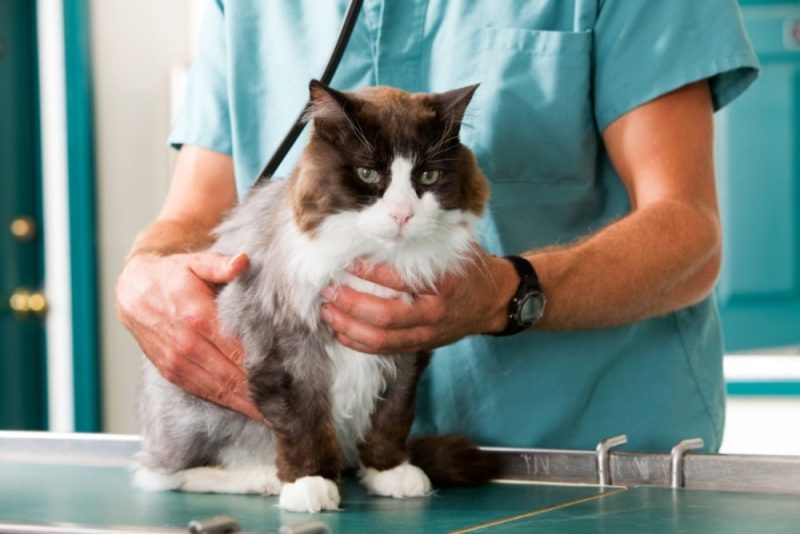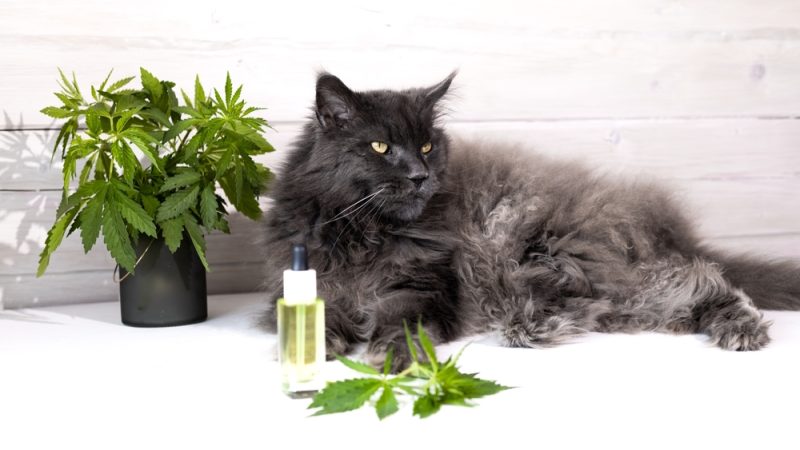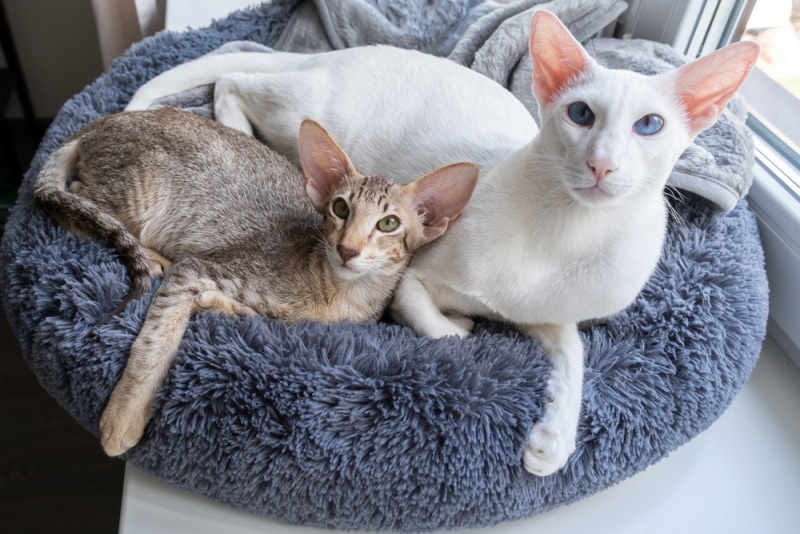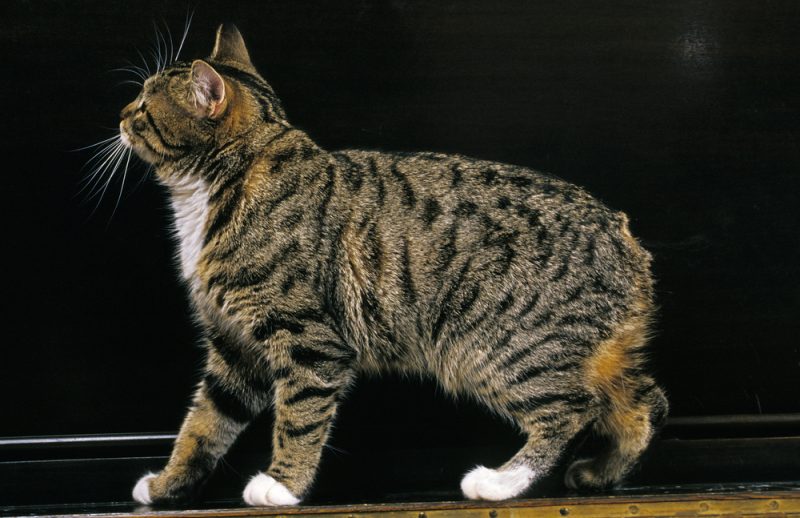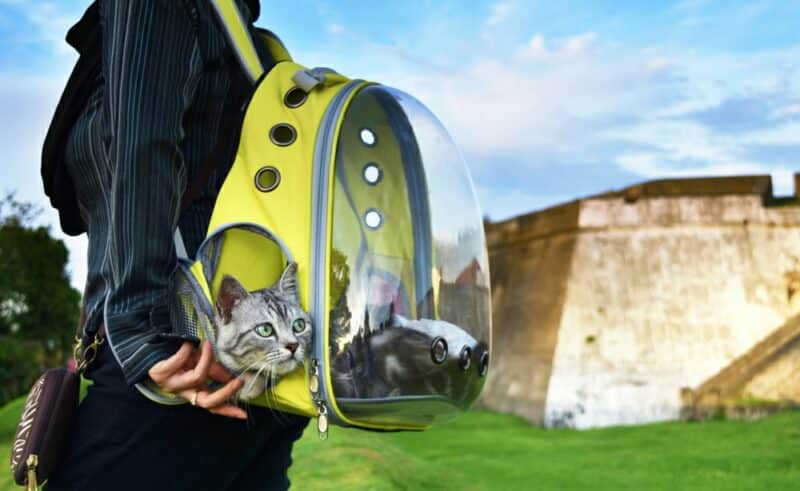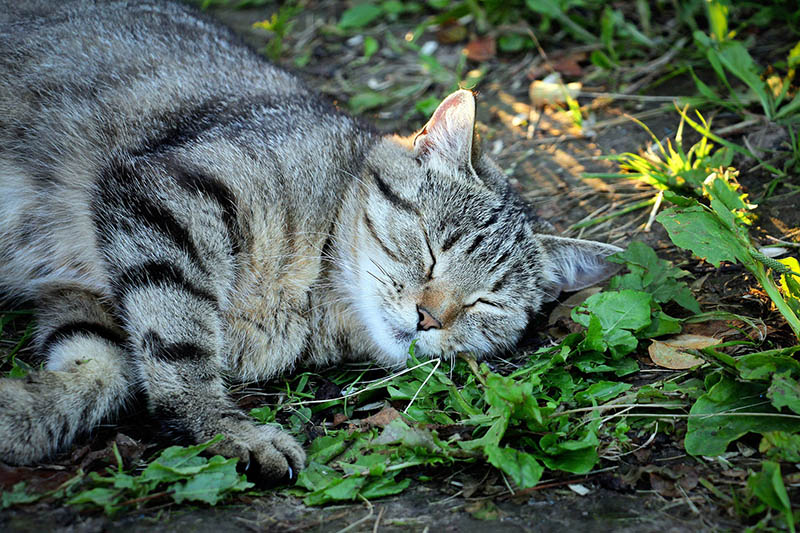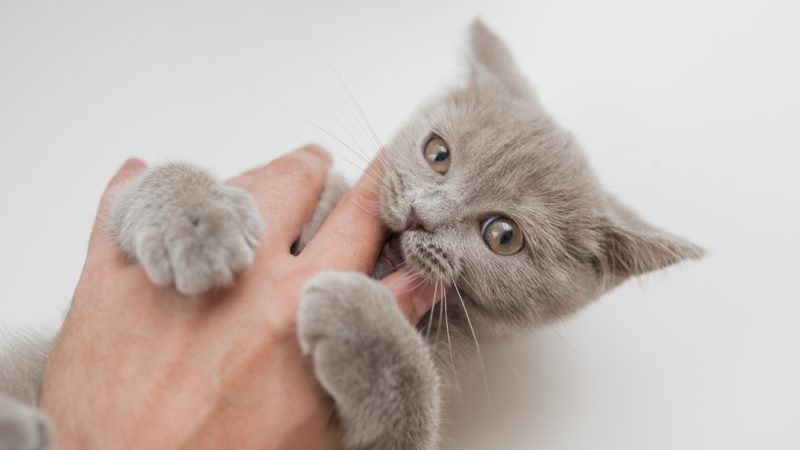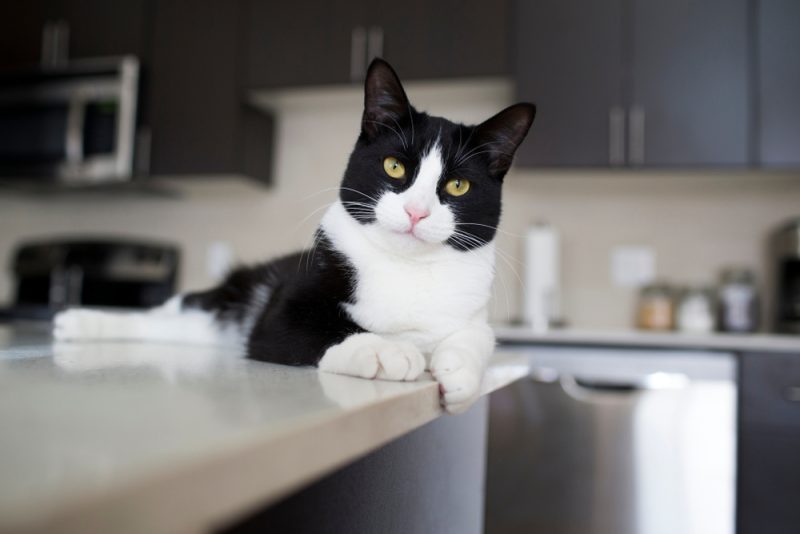In this article
View 5 More +Hyperthyroidism is a very common condition seen in cats, and in this condition, the thyroid becomes overactive. One or both of the thyroid glands can be affected. A benign swelling of the thyroid tissue is the most common cause, but malignant tumors do occur too. Clinical signs of hyperthyroidism in cats include weight loss, increased appetite, changes in coat quality, and behavioral changes to mention a few.
There are many effective management and treatment options for hyperthyroidism in cats. It is a progressive disorder and if left untreated it can cause serious health issues. Diagnosis and control of the condition can be very challenging and relies heavily on good owner compliance.

What Is Hyperthyroidism in Cats?
The thyroid gland controls your cat’s metabolism, and it affects every cell in your cat’s body. Thyroid hormones influence all of the organs in your cat’s body, so often there are secondary problems witnessed with the disease due to organ malfunction as the disease progresses.
Cats have two thyroid glands situated in the neck area. The glands are responsible for the production of two thyroid hormones called T3 and T4. The active state of hyperthyroidism occurs when one or both of the glands are overactive. The most common cause of hyperthyroidism in cats is a benign growth called an adenoma. On rare occasions, hyperthyroid disease can be caused by a malignant tumor such as a thyroid adenocarcinoma.
Cats affected by hyperthyroidism function with a much higher metabolism than cats that have normal thyroid glands. When the thyroid gland is overactive for a long period of time, in the long term, this takes its toll on your cat’s body. If the thyroid gland is persistently overactive, this causes poor coat condition, high blood pressure, increased heart rate, and weight loss.
At first, clinical signs of hyperthyroidism can be difficult to spot, but gradually, due to the nature of the disease, they get worse and more obvious.
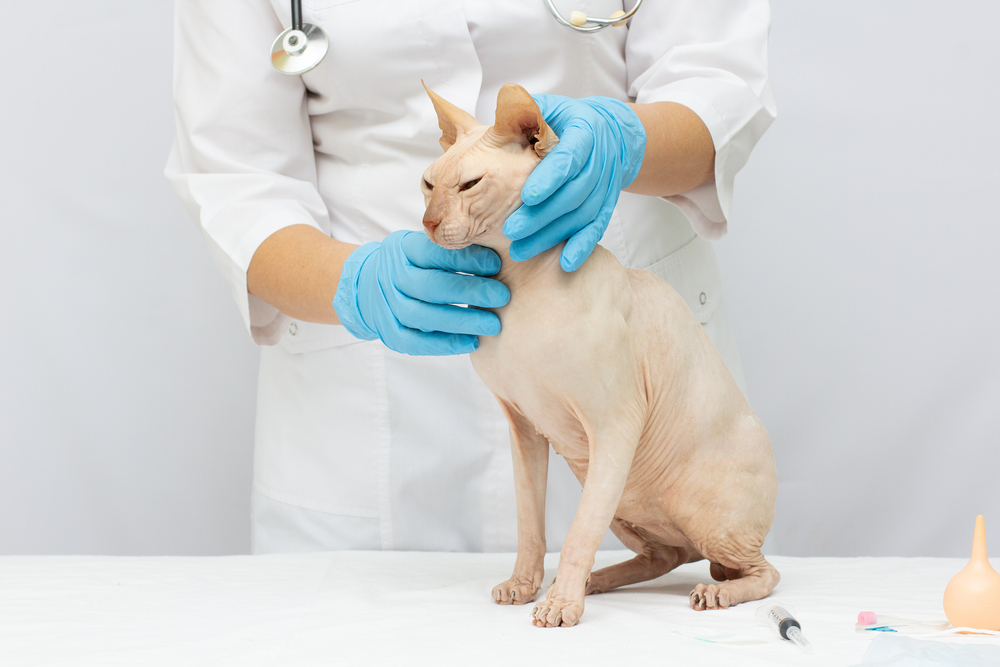

What Are the Signs of Hyperthyroidism in Cats?
Clinical signs of hyperthyroidism in cats vary depending on the stage of the disease and how long the glands have been overactive.
Early signs of hyperthyroidism include:
- Increase in appetite
- Weight loss
- Increase in vocalization
- Palpable mass in the neck
- Behavioral changes (more anxious/fractious/aggressive)
- A sudden increase in energy
- Increased thirst
- Increased urination
- Gastrointestinal signs such as vomiting and diarrhea
- Loss of coat condition
- Reduction in grooming activities
- Alopecia
- Lethargy
- Faster heartbeat
- Sleep disturbances
Clinical signs once the disease has become well established vary slightly. The clinical signs mentioned above will progress and become more profound. As the disease affects more organs, conditions such as high blood pressure, heart disease, kidney disease, liver disease, respiratory issues, skin disorders, and blindness can become apparent.
Clinical signs noted by owners as the disease progresses include:
- Seizures
- Incoordination
- Muscle tremors
- Muscle weakness and wastage
- Dilated pupils
- Blindness
- Heart arrhythmias and murmurs
Diagnosis of Hyperthyroidism in Cats
Diagnosis of hyperthyroidism in cats is usually straightforward. Your vet will start by performing a full physical exam and taking a detailed clinical history from you. Once your vet has a list of differential diagnoses, they will decide on which tests to carry out. Routine blood tests will be run to assess blood cell counts and organ function.
They will also carry out a urinalysis and may request some specific blood tests to assess the level of the thyroid hormone T4 in the blood. Normally, this hormone is increased in cats with hyperthyroidism. If this test comes back as elevated, and the clinical signs fit the picture, your vet is likely to diagnose hyperthyroidism. There are some anomalies where a cat may be showing clinical signs but the T4 hormone hasn’t increased much or is in the normal range. If this is the case, other blood tests can be carried out. Your vet will discuss which tests are most appropriate for your cat.
If tests are still not conclusive, sometimes an ultrasound scan of the thyroid glands can be carried out. Scintigraphy can be used but is usually only performed at specialist referral centers. Your vet may also suggest repeating the T4 hormone blood tests in 3–4 weeks to assess any changes.

What Are the Causes of Hyperthyroidism in Cats?
The physical cause of hyperthyroidism in cats is due to the increased functioning of thyroid nodules which in turn results in excessive production of thyroid hormones. The cause of these hyperfunctioning nodules is not clearly understood.
It is likely to be a combination of genetic factors and environmental conditions. There are a few theories about what might cause cats to develop hyperthyroidism including thyroid cancer, some varieties of canned foods, exposure to high levels of dietary iodine, and flame-retardant chemicals in furniture. Older cats are more likely to be affected than kittens.
How Do I Care for a Cat with Hyperthyroidism?
There are various options for managing and treatment of hyperthyroidism. These include:
- Medication
- Surgery
- Radioactive iodine
- Dietary management
Each of the options above has pros and cons. Your vet will discuss the options in detail and work out which is the best for you and your cat. Some of the options will not be suitable or feasible so it is important to be honest with what your expectations are. Factors that may sway your decision one way or the other include:
- Your cat’s general health and the presence of any other diseases such as kidney disease
- Your cat’s temperament
- Financial constraints
- Your ability to give medication to your cat
Medication: There are drugs that can be used to manage the condition, as opposed to curing it. A drug called methimazole can be given orally. It can be given as a tablet or liquid or transdermal gel. Methimazole works by reducing the amount of circulating thyroid hormone in your cat’s body. The drug suppresses the release of thyroid hormones from the glands.
Drug therapy can be used as a short-term option to manage cases prior to surgery, or as a long-term management strategy. It can be difficult to determine the correct dose and frequency of dosing so owners need to be aware that they will be required to attend lots of vet visits for monitoring. The medication needs to be given daily, and some owners struggle with this commitment. Cats have a good quality of life once the correct dose has been determined.
Surgery: The surgical option for the treatment of hyperthyroidism in cats involves the complete removal of the gland. This is called a thyroidectomy. This is a relatively straightforward operation and is done under general anesthetic. The surgery usually cures the condition. Cats must be well enough to be put under general anesthesia, and some are not good candidates due to concurrent health issues.
There is also a risk of damage to the parathyroid glands during the surgery. Close monitoring in the postoperative period is required to ensure your cat is stable and the parathyroid glands are still working as they should be.
Radioactive Iodine: This is a specialist procedure carried out at referral practices that cures the condition in most cats. An injection or pill of a radioactive iodine isotope is given to your cat—iodine is required to make the thyroid hormones. The radioactive iodine is taken via the bloodstream to the thyroid gland. Here the thyroid takes up the radioactive isotope. This releases radiation which actively destroys the abnormal thyroid tissue, and all other tissues are unaffected.
The radioactive isotope is passed out via your cat’s urine. Your cat will remain hospitalized until the radiation levels have reduced enough for it to be safe for your cat to go home.
Diet: A diet low in iodine is supposed to be helpful for cats with hyperthyroidism. There is some confusion on this as reducing iodine in the long term can have a detrimental effect on your cat. More research is required on this subject. It is always best to consult a vet before making any dramatic changes to your cat’s diet.
Need veterinary advice but can't get to the clinic? Catster recommends PangoVet, our online veterinary service. Talk to a vet online and get the answers and advice you need for your cat without having to leave your living room — all at an affordable price!


Frequently Asked Questions
Are cats with hyperthyroidism in pain?
Hyperthyroidism itself is not a painful condition, however, some of the clinical signs can cause your cat discomfort and distress. This is especially true if the disease has been left to progress and the vital organs in the body are affected.
Can hyperthyroidism be prevented?
It is not possible to prevent hyperthyroidism currently. Frequent monitoring and regular visits to your vet can aid in the detection of the disease. Early diagnosis and initiation of treatment can prevent secondary problems from developing and irreversible damage from occurring.
All cats over the age of 8 years should ideally be checked over by a vet every 6 months and they should receive an annual blood and urine test to screen for health issues as routine.
What is the prognosis for hyperthyroidism in cats?
Generally, the prognosis following treatment is very good—most cats go on to live a normal life. The outcome of the management options largely depends on owner compliance. Follow-up examinations at the vets must be attended to assess response to treatment regularly.

Conclusion
Hyperthyroidism is a very common issue seen in the older cat population. Hyperactivity of the thyroid gland is usually caused by a benign growth known as an adenoma. The thyroid gland affects multiple organs so if it is overactive, there are often secondary disorders seen when these organs malfunction.
There are several effective treatment options for hyperthyroidism, some manage the disease and others cure it. If prompt diagnosis and treatment occur, the prognosis is good.
See also:
- How to Reduce Your Cat’s Risk of Hyperthyroidism: 5 Ways (Vet Answer)
- Can Cats Have PTSD? Our Vet Explains Trauma Facts & How to Help
Featured Image Credit: Tyler Olson, Shutterstock
